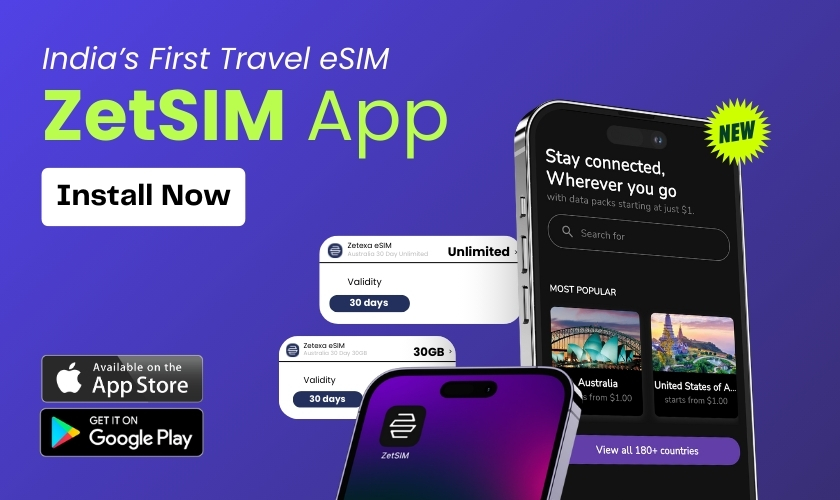In the fast-paced digital world, enterprises are on their toes to innovate and hold good leads over competition. Needless to say, eSIM technology stands almost at the threshold to all of this—game-changing innovation reshaping mobile connectivity and opening exciting opportunities for strategic alliances.
If you are looking for answers on how eSIM technology can help in revolutionizing your business partners, then this is the right place. Let us see how strategic alliances within the partner ecosystem could be driving your digital transformation and IoT integration.
eSIM Technology and The Power of Strategic Alliances
eSIMs are only hardcoded versions of the more common physical SIM cards, but they have remote reconfiguration capabilities. Because of this feature, customers can switch providers or plans without tinkering with any actual SIM cards.
In the eSIM technology world, strategic alliances are much more than business partnerships—the means to driving innovation and market reach. Strategic alliances can help pool expertise, share resources, and enable companies to drive the development of new solutions at higher speeds. Such collaborations are critical in an eSIM space changing at rapid pace, with very diverse applications.
For instance, an eSIM solution company can collaborate with a worldwide mobile network operator. That can expose a huge customer base to the eSIM service provider and, at the same time, empower the network operator to offer more value-added services and differentiated products to its users.

Building Effective Partner Ecosystems
A partner ecosystem is a network of companies, organizations, and individuals that work together for the achievement of something. An entire ecosystem in eSIM technology normally consists of device manufacturers, network operators, service providers, and technology developers. Each of these actors brings different strengths to the table, which put together, drive the technology.
Signed agreements are not sufficient for developing a partner ecosystem to drive the deal’s success; a collaborative atmosphere is needed, and goals have to be aligned. Here are some tips on how to have a robust partner ecosystem around the domain of eSIM technology:
1. Identifying Complementary Partners
Companies in the first instance should find businesses that supplement the strengths of the business. These can be network operators, device manufacturers, or software developers in the eSIM technology domain. Each of the partners provides value in the form of wide distribution channels, advanced hardware, or new software solutions.
A good example would be an eSIM vendor partnering with a device manufacturer so that technology fits seamlessly into a new device. Such a collaboration only ensures smoother user experiences and quicker adoption rates for eSIMs.
2. Align Objectives and Goals
An effective alliance means an alliance wherein the objectives and goals have been clearly aligned. It is very important to understand what both parties want to achieve from a partnership before entering into one. This may involve some mutual goals about revenues, joint marketing efforts, or maybe collaborative research and development.
In the eSIM technology space, such alignment of objectives could mean agreeing how to grow in the market or how to together confront the challenges in IoT integration. Proper communication and a common vision will avoid possible misunderstandings and guarantee that both parties realize the identified goals.
3. Leverage Each Partner’s Strengths
Of course, each ecosystem partner will bring along unique skills and advantages. The alliance should be leveraged, and its many benefits should be reaped. For example, a digital transformation professional will be able to draw invaluably upon their knowledge of how the technology can be integrated into more comprehensive digital initiatives. It’s possible that the network operator has expertise in growing mobile connection solutions.
This will motivate more innovation and help each partner capture knowledge to enhance the results for their clients.
4. Encourage Open Communication
Communication is at the very heart of any successful collaboration. Progress control, reporting, and feedback sessions will allow the parties to stay in rhythm with one another. This will be crucial if the domains are fast-developing, as in the case of eSIM technology, whose developments and changes come back-to-back.
Make sure that problems are detected at the very earliest, and also that collaboration remains productive and beneficial to both parties by encouraging open communication.
5. Focus on Mutual Benefits
In other words, a strategic alliance must have a mutual benefit-sharing bottom line where both parties are enjoined to realize some tangible advantages as a result of the partnering. In the case of eSIM technology, this may be an increase in shares in the market as a result of increased technological capability and possible improvement in the customer experience to gain strategic advantage.
These can be more effective partnerships due to the accruing benefits to both parties. Since all efforts will result in mutual success, every party will have enough motivation to offer good contributions and work together in effective ways.

Benefits of Building Strategic Alliances in eSIM Technology
There are several advantages associated with strategic connections. Let us look at some of the primary ones:
1. Rapid Innovation
In a simple sense, partnership refers to the exchange of knowledge and resources that can increase the growth rate of new technologies and solutions.
In high-speed eSIM technology—where innovations seem to be happening almost day in and day out—a strong partner ecosystem can make a lot of difference in keeping business ahead.
2. Better Market Reach
Also, a strategic alliance can help increase market presence by simply making use of each other’s network or customer base. For example, a device manufacturer who has its center of operation in one region will ally with a network operator dominant in another region to ensure that the devices it manufactures find a global audience.
3. Cost Efficiency
This can attain cost reduction by sharing resources and making joint development efforts. Development of eSIM solutions from scratch involves huge costs of investment; therefore, with the partners’ expertise, the companies can achieve goals at a reduced cost.
4. Better Customer Experience
Businesses can collaborate to drive more integrated, ever-easier experiences. For example, a strategic partnership between the device manufacturer and the operator will drive better eSIM technology integration, thereby easily facilitating the activation and management of mobile plans by users.
Conclusion:
The strategic alliances within the eSIM technology ecosystem will be a force that companies can reckon on to drive innovation towards the broad market and realization of digital transformation. One can, through the collaboration of complementary and goal-aligned partners, unleash new opportunities and create more seamless experiences for customers. Once eSIM matures, strategic alliances will lie at the very center to shape the future of mobile connectivity with IoT integration.
Now you need to think about how large that potential is for your business as a device manufacturer, network operator, service provider, or technology developer. Join forces with us and unlock the full potential of eSIM technology to finally be in a position to reap success in this dynamic digital landscape.

Download ZetSIM App from the APP Store
Download ZetSIM App from the Google Play Store
FAQs
It refers to the network of carriers, device manufacturers, and service providers working together to ensure eSIM adoption and effective service delivery.
Companies gain access to broader markets, improve service delivery, and reduce operational costs by collaborating with trusted eSIM providers.
Partnering within the ecosystem helps provide customers with customized, reliable, and cost-effective connectivity solutions globally.
The ecosystem promotes interoperability and innovation, ensuring that eSIM adoption accelerates and benefits users worldwide.
Zetexa eSIM provides reliable global coverage, seamless integration, and expert support, making it an ideal partner for businesses looking to optimize their connectivity offerings.



